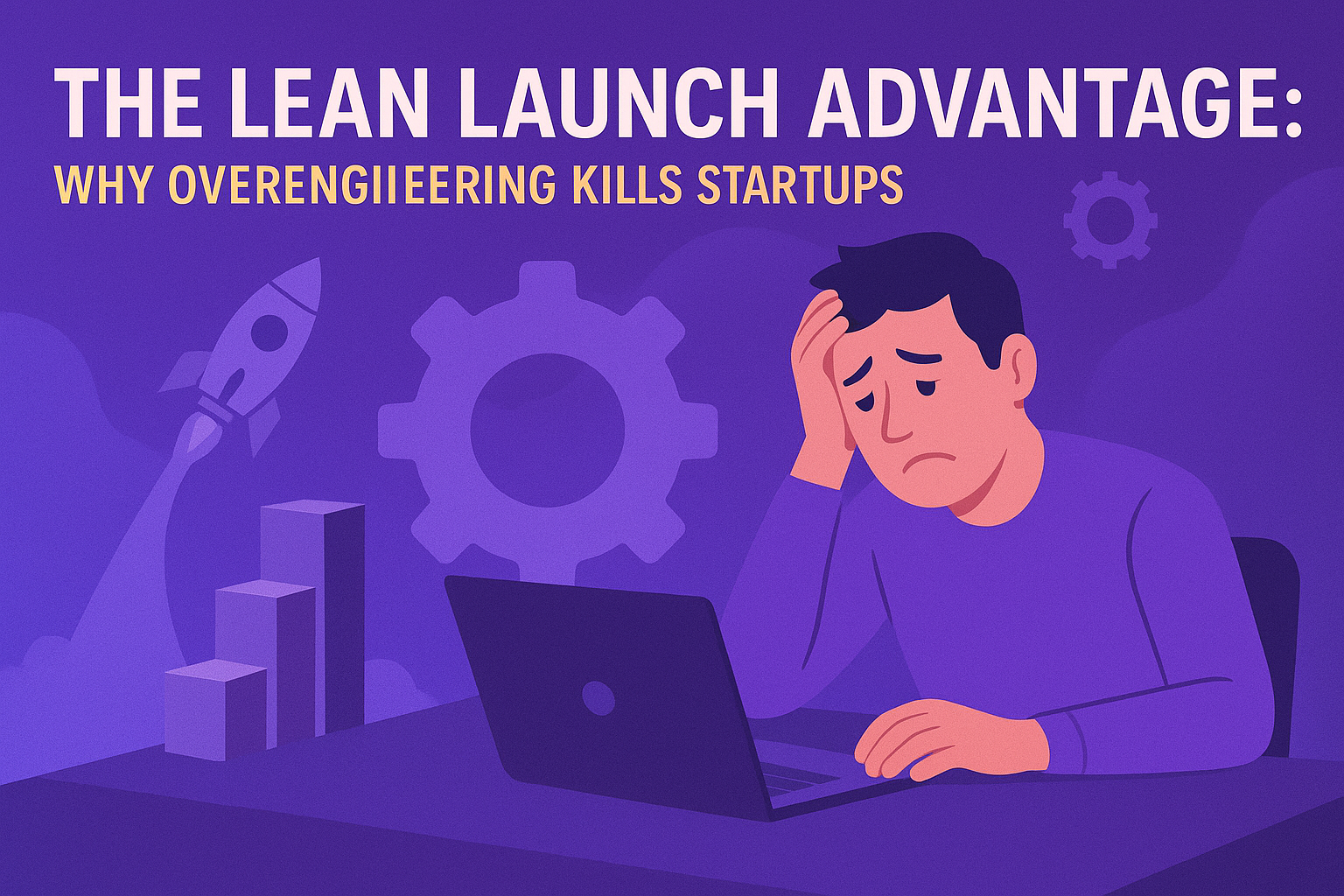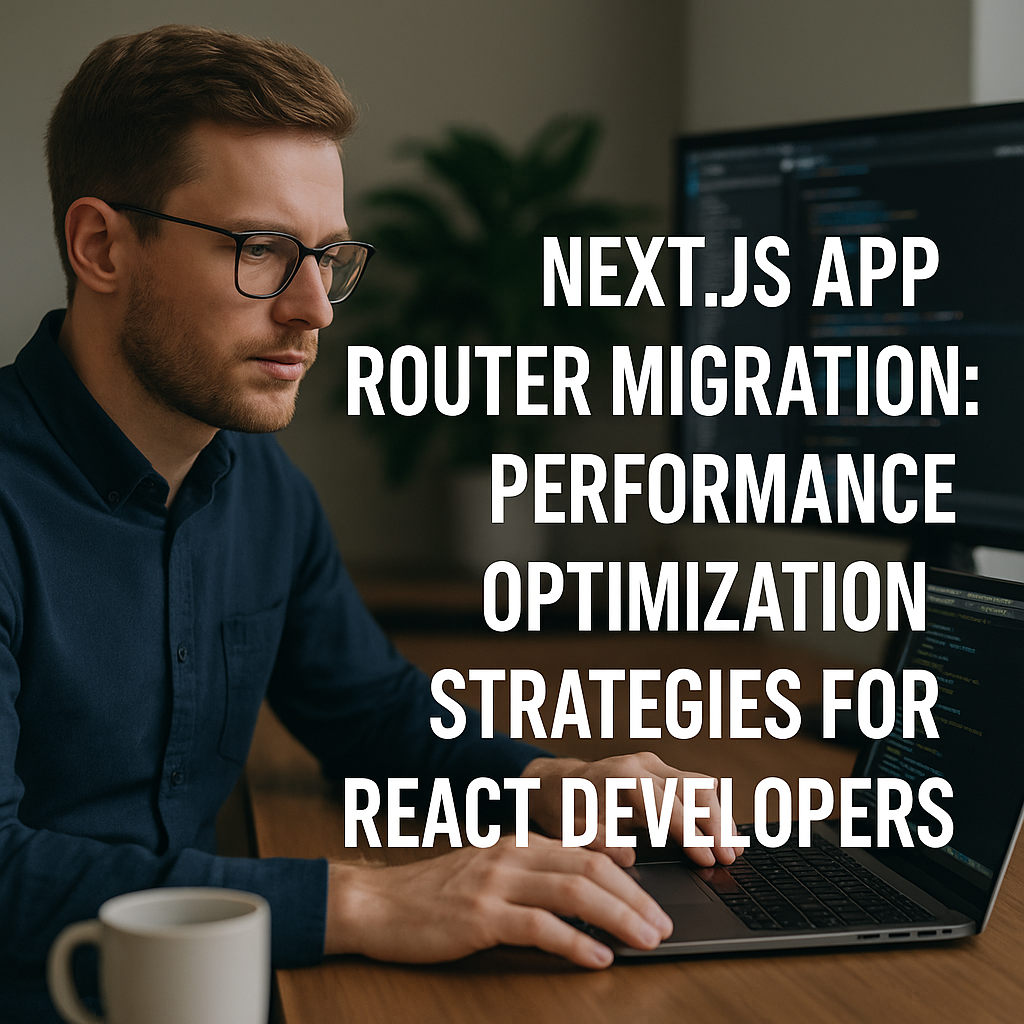In the fast-paced world of tech startups, there’s a dangerous misconception that sophisticated infrastructure is a prerequisite for success. Many technical founders, armed with engineering expertise and dreams of scale, fall into the trap of building complex systems before proving their business model. At Sweesh.dev, we’ve witnessed this pattern repeatedly: startups investing precious time and resources into microservices, Kubernetes clusters, and elaborate CI/CD pipelines—only to discover no one wants their product.
This article explores why overengineering is the silent killer of startups and how embracing a lean approach to infrastructure can dramatically increase your chances of success. Drawing from our experience launching dozens of startups in just two weeks, we’ll show you why staying lean isn’t just about saving money—it’s about survival.
The Microservices Mirage: Why Complex Architecture Slows You Down
The allure of microservices is undeniable. Breaking your application into independent services promises scalability, team autonomy, and technological flexibility. For established companies with proven products and dedicated platform teams, these benefits are real. For startups, they’re a dangerous distraction.
When you’re still discovering what your customers want, microservices architecture introduces several critical problems:
Development Overhead: Each service requires its own deployment pipeline, monitoring, and maintenance. What could be a simple code change in a monolith becomes a complex orchestration across multiple repositories and services.
Debugging Complexity: When issues arise (and they will), tracing problems across service boundaries becomes exponentially more difficult. What might take minutes to diagnose in a monolithic application can consume days in a distributed system.
Premature Optimization: Microservices are fundamentally an optimization for scale and team organization—problems most startups don’t have yet. As Amazon’s Werner Vogels famously said, “You build it, you run it.” With limited resources, do you really want to run 12 different services?
A technical founder from one of our failed startups reflected: “We spent three months perfecting our microservices architecture. By the time we launched, our competitors had already iterated their product twice based on customer feedback. We built a beautiful, scalable system that nobody wanted to use.”
The Cloud Giant Tax: Why Google Cloud and AWS Can Drain Your Runway
Google Cloud Platform and Amazon Web Services are remarkable technological achievements, offering virtually unlimited scalability and hundreds of specialized services. They power some of the world’s largest applications—but they come with hidden costs that can be lethal for early-stage startups.
Cost Complexity: Both AWS and GCP feature notoriously complex pricing models with multiple dimensions of billing. Many startups have experienced the “bill shock” of unexpected costs, sometimes tens of thousands of dollars, due to misconfigurations or misunderstandings of how resources are charged.
Learning Curve: The AWS service catalog now exceeds 200 distinct offerings, each with its own configuration options, best practices, and gotchas. The cognitive overhead of choosing and properly implementing these services represents a significant hidden cost.
Operational Burden: Managing cloud infrastructure at this level requires specialized expertise. Many startups find themselves needing DevOps engineers earlier than they can afford them, diverting precious technical resources from product development.
Vendor Lock-in: As you integrate more deeply with cloud-specific services, migrating becomes increasingly difficult. What starts as convenience quickly becomes dependency, limiting your flexibility as your needs evolve.
One startup we worked with built their MVP on 17 different AWS services, creating a complex web of dependencies. When they needed to optimize costs during an extended fundraising period, they found themselves locked into an architecture that was difficult to simplify or migrate. The infrastructure complexity ultimately contributed to their failure to adapt quickly enough to market feedback.
The Modern Alternative: Lightweight Infrastructure That Scales
The good news is that a new generation of infrastructure platforms has emerged, designed specifically for the needs of modern startups. These platforms offer the perfect balance of simplicity, cost-effectiveness, and room to grow.
Supabase: The Open-Source Firebase Alternative
Supabase combines a PostgreSQL database, authentication, storage, and real-time capabilities in a single, developer-friendly platform. For startups, this means:
- Rapid Development: Authentication, database, and storage are pre-integrated, eliminating weeks of boilerplate work.
- SQL Foundation: Unlike proprietary NoSQL solutions, Supabase is built on PostgreSQL, giving you the power of SQL with the convenience of modern APIs.
- Cost Predictability: Transparent pricing without the surprise costs that plague major cloud providers.
- Open Source Core: No vendor lock-in, with the option to self-host if needed.
Elest.io: Flexible Cloud Without the Complexity
Elest.io provides a refreshingly simple approach to cloud infrastructure:
- Totally Flexible Infrastructure: Scale up or down instantly with no lock-ins.
- Multi-Cloud Capability: Combine up to 7 cloud providers with access to 138+ regions globally.
- Predictable Pricing: Starting from just $10/month with transparent, all-inclusive pricing.
- Managed Operations: No more maintenance or upgrade headaches, with fully managed services.
Vercel: Frontend Deployment Made Simple
Vercel has revolutionized frontend deployment with its focus on developer experience:
- Effortless Deployment: Deploy directly from Git repositories with zero configuration.
- Preview Deployments: Every pull request gets its own deployment preview, making collaboration seamless.
- Edge Network: Global CDN ensures your application is fast for users worldwide.
- Serverless Functions: Build API endpoints without managing servers.
By combining these platforms, startups can create a robust, scalable infrastructure without the complexity and cost of traditional cloud setups. One of our successful clients launched a SaaS platform using Supabase for backend, Vercel for frontend, and grew to 10,000 paying customers before needing to consider more complex infrastructure.
The Kubernetes Conundrum: Why You Don’t Need It (Yet)
Kubernetes has become synonymous with modern infrastructure, but its complexity makes it a poor fit for early-stage startups. Here’s why:
Steep Learning Curve: Kubernetes has a notoriously steep learning curve requiring specialized knowledge. Small startups rarely have this expertise in-house, and acquiring it diverts focus from your core product.
Resource Requirements: Kubernetes itself consumes significant resources even before your application is deployed. A minimum viable cluster often requires multiple nodes, increasing your cloud costs compared to simpler deployment options.
Operational Overhead: Ongoing maintenance, security patching, and version upgrades require dedicated attention. For a small team, this represents a significant percentage of your technical capacity.
Limited Early Benefits: The primary benefits of Kubernetes—high availability, auto-scaling, and resource efficiency—only become relevant at scales most startups won’t reach for months or years.
Similarly, while Docker provides benefits for development environment consistency, it introduces additional complexity in build processes, debugging, and deployment that rarely justifies its use in early MVPs.
As for complex CI/CD pipelines, they often become projects in themselves. While basic automation is valuable, elaborate multi-stage pipelines with canary deployments and complex testing matrices are premature optimizations for most startups.
The Lean Launch Imperative: Move Fast and Learn
The lean startup methodology, pioneered by Eric Ries, emphasizes a build-measure-learn feedback loop that minimizes time through the cycle. This approach is fundamentally at odds with complex infrastructure that slows down iteration.
Validated Learning: In a startup, progress should be measured in validated learning about customers, not the sophistication of your infrastructure. Every week spent configuring Kubernetes is a week not spent understanding your users.
Minimum Viable Product: An MVP should be minimal but still valuable and functional. Focus on doing a few things well rather than many things poorly, and ensure your core value proposition is clearly delivered.
Data-Driven Decisions: Use actionable metrics tied to business outcomes to guide product development. Avoid vanity metrics that don’t inform decisions, and create simple dashboards that the whole team understands.
Fast Iteration: The startup that learns fastest wins. Technical choices should prioritize iteration speed above almost all else in the early stages.
One startup we worked with initially planned a six-month development cycle for their MVP, including a microservices architecture and comprehensive CI/CD pipeline. After consulting with us, they pivoted to a monolithic application on Vercel and Supabase, launching in just three weeks. This allowed them to gather crucial user feedback and pivot their core offering before their original launch date would have even arrived.
Sweesh.dev’s Proven Approach: From Concept to Launch in Two Weeks
At Sweesh.dev, we’ve refined a process that enables startups to launch MVPs in just two weeks by embracing lean infrastructure principles. Our approach has been battle-tested across dozens of startups, and the results speak for themselves:
Ruthless Prioritization: We focus exclusively on features that directly validate core business hypotheses. We’re comfortable making temporary technical compromises to accelerate time to market, taking on deliberate technical debt when it serves business objectives.
Lean Infrastructure Evolution: We start with the simplest viable infrastructure and gradually introduce complexity only when justified by real needs. We prefer managed services over self-hosted solutions and build infrastructure that grows with the business, not ahead of it.
AI-Enhanced Development: We integrate AI tools throughout the development process, using them for code generation, testing, and feature prioritization to accelerate development without sacrificing quality.
Continuous Customer Feedback: From day one, we establish structured processes for collecting and acting on user feedback, with feature prioritization driven by direct user input and metrics-driven development focused on engagement.
This approach has yielded remarkable results:
- 80% decrease in pre-launch development costs
- 90% reduction in infrastructure setup time
- 4x faster iteration cycles post-launch
- Higher customer acquisition rates due to earlier market entry
The Hard Truth: Why Most Startups Fail
Through our work with dozens of startups, we’ve observed a consistent pattern: those that focus too heavily on technology rather than customer needs are far more likely to fail. This isn’t just our observation—research consistently shows that “no market need” is the primary reason startups fail, cited in approximately 42% of failures.
The most painful failures we’ve witnessed share common characteristics:
- Perfect code couldn’t compensate for misunderstood customer problems
- Sophisticated architecture couldn’t attract users to unwanted products
- Technical perfection often came at the cost of business agility
One particularly instructive case involved a startup that invested heavily in a microservices architecture using Kubernetes on AWS. Their infrastructure could theoretically handle millions of users, but they never acquired their first thousand. They ran out of funding while still perfecting their infrastructure, having spent minimal time validating their core business assumptions.
Conclusion: Embrace the Lean Advantage
The path to startup success isn’t paved with complex infrastructure—it’s built on rapid learning and adaptation. By embracing lean infrastructure principles, you can:
- Launch faster and start learning from real users sooner
- Extend your runway by avoiding unnecessary infrastructure costs
- Iterate more quickly to find product-market fit before competitors
- Focus your team’s energy on solving customer problems, not infrastructure challenges
At Sweesh.dev, we’ve helped dozens of startups launch in just two weeks by applying these principles. We’ve seen firsthand how the right approach to infrastructure can be the difference between success and failure.
If you’re a technical founder looking to launch your MVP quickly and efficiently, we invite you to book a call with our team. We’ll share how our lean approach can help you avoid the overengineering trap and focus on what truly matters: building a product your customers love.
Remember, in the early days of your startup, your infrastructure should be just good enough to support learning and iteration. You can—and should—worry about scale once you’ve proven people actually want what you’re building.
Book a call with Sweesh.dev today to discover how we can help you launch your MVP in just two weeks, using the perfect balance of modern technology without the bloat that kills so many promising startups.

